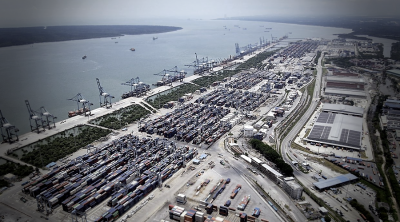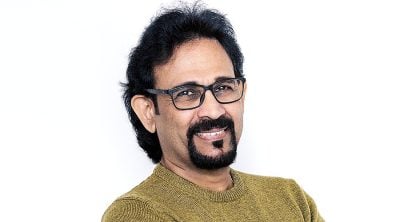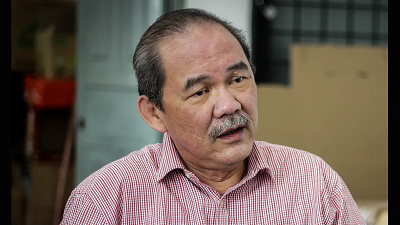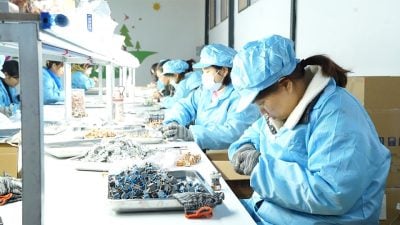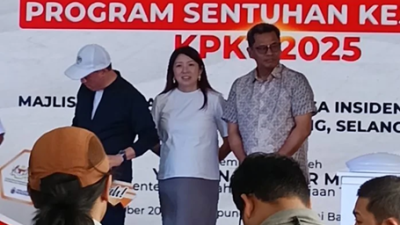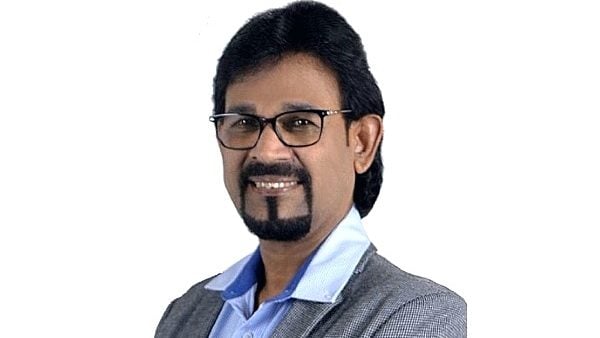
Malaysia was ranked first in the world’s best healthcare category at the recent International Living Annual Global Retirement Index.
However, a recent survey published in January 2023 states that out of approximately 1,600 government doctors, nurses, pharmacists, dentists, medical assistants and allied healthcare workers nationwide, more than half are willing to go on strike, while seven out of every ten are thinking of quitting.
Notably, 73% of respondents (1205 people) said they were considering quitting the government health service.
The temporary doctors’ Black Monday strike on April 4, 2023, further exacerbates the grave issue faced by our medical service.
While our health services are seemingly great, a peek into the mechanics reflects our inefficiency to level off the medical manpower supply with the demand for health services today.
It also shows the failure of the human resources services in reacting to the changes, more so after the Covid-19 phenomenon.
Medical staff, including doctors and nurses and related industry individuals, are suffering daily as the demand for service has tremendously increased.
Why is this so?
Rapid development, higher cost
One key reason for the escalating health bill is the rapid development of our country.
We see new townships everywhere. Areas that once used to be estates or plantations like Puchong and Bukit Jalil have since boomed into bustling cities.
Bigger areas mean a bigger population that leads to a higher need for healthcare.
The long lines of patients at Klinik Kesihatan Puchong on a daily basis is never ending, meaning the workload of the medical staff is never ending too.
Today’s lifestyle and obesity
The lifestyle of today’s generation has little regard for taking care of one’s health.
There is no control or discipline over what we eat, causing the obesity rate for adults aged 18 years and above to reach 20%, according to the National Health and Morbidity Survey (NHMS). 60% of diabetes are obese.
The government spends more than RM100 to 120 million on insulin, and more than RM100 million for dialysis.
No one is doing anything about teaching Malaysians the dangers of obesity, thus the government spends and spends.
Free for all
Many countries charge for medical services, but Malaysia pledges its branding of free healthcare for Malaysian citizens.
With such a system, everyone heads to government hospitals for medical aid.
Government hospitals are overcrowded, medical staff are overworked.
Hospitals and fresh graduates
Malaysia has more than 12 teaching hospitals, five military hospitals, 146 government hospitals and 209 private hospitals.
Every year approximately 4,000 new doctors graduate from Malaysian universities and 6,000 from universities overseas.
Nine out of every ten are posted to rural areas, from which they will work their way out to the urban areas and cities.
Currently, the doctor-patient ratio in East Malaysia (Sabah and Sarawak) stands at 1:500, whereas Klang Valley holds 1:28.
The government has allocated RM36 billion for 2023 as the healthcare budget. This allocation must be spread out with much thought and safe steps to maximize the amount, as 63%, which is about RM 19 billion, goes to staff salaries, not including pensions.
1. Sharing the Load, Sharpening the Skills
The demand for temporary doctors and nurses is a current issue.
Teaching hospitals must play a bigger role. Currently only government hospitals house trainee doctors.
Collaborate teaching hospitals with government and private hospitals; ensure that all trainee doctors receive proper and standardized training at any one of these hospitals.
This can help relieve the government hospital’s burden, provide extra medical hands for all the hospitals, and ease the issue of medical staff shortage.
Post-mortem can only be done at government hospitals at a high cost of almost RM5,000.
Allow this procedure to be shared among the government, teaching and private hospitals; it will lighten the staff workload and lessen the cost.
All doctors are trained in this area and there is also Digital Forensics, so all it needs is for the facilities to be set up and allow several dead bodies to be worked on quickly and smoothly at a lesser cost.
Doctors in the service who choose not to be practitioners, but serve as administrators instead, should be sent to the Ministry of Education to teach mathematics, science and health science at schools.
Their service should be recognized and greater opportunities can be created for them. This will also help reduce the baggage that we have in every hospital.
We can collaborate with the general practitioners (GPs) by utilizing their services.
Patients can be categorized as “high risk” and rushed to the hospital’s emergency department, while the “low risk” – those with cough, cold, minor injuries – can be treated by GPs who can charge the government based on the treatment and number of cases.
This will bring tremendous relief to the emergency departments of all hospitals in the country.
2. Sharing
The need for more up-to-date but expensive medical equipment is unavoidable.
Expensive equipment like Magnetic Resonance Imaging (MRI) can be shared with private hospitals. This was done during the Covid-19 pandemic.
The cost of this heavy high-tech equipment is the same, be it with the private sector or public sector.
Currently, government equipment such as MRI is overused.
Providing both government and private hospitals with the same equipment will reduce the number of patients in one hospital, producing a win-win situation in the process.
3. Building new and refurbishing the old
There are already 209 private hospitals in the urban area.
We should utilize the hardware and software of private hospitals rather than build new hospitals, especially in urban areas.
For instance, by purchasing the services of private hospitals like KPJ and SDMC, we would be able to reduce the load at the Sungai Buloh General Hospital (GH), Selayang GH and University Hospital
Also, we should use the funds to refurbish existing government hospitals instead of building new ones in areas already overflowing with private hospitals.
If there is a need to build a new hospital, Sepang would be a good location as there is no hospital there or nearby.
Currently, three hospitals are being built in Pasir Gudang, Kempas and Kapar respectively.
This should be carefully reviewed to ensure that there is no duplication of facilities in the same vicinity.
More than RM500 million has been spent in building Langkawi Hospital for the B40 and attracting health tourism.
I think we should allow private hospitals instead to build hospitals in Langkawi so we can buy the services for the locals.
Having too many hospitals in the same locality or spending so much on one hospital are mistakes that we must avoid to distribute the funds and facilities properly.
4. Facilities, amenities, aid services
The cost of medical care must be raised to factor in the progression of technology and the costs of equipment and state-of-the-art facilities.
We are spending RM1.8 billion to RM2.4 billion annually to maintain the hospitals in the country.
With the digital platform, perhaps private dental clinics could offer a hybrid model alluring government and private patients, indirectly reducing the government cost by RM20 billion, including pensions.
Satellite hospitals with 30 beds, modular OT and an emergency room can be built in rural areas, especially in East Malaysia to save more lives as the rural areas lack these services in a timely manner. This is a proven method in Australia and India.
Insurance companies must allow policyholders to claim medical costs for both daycare and overnight stay.
Currently patients can only claim overnight stays. This needs to be changed.
Patients who need minor surgeries or treatment should be allowed to have treatment and go home on the same day and be able to claim medical insurance.
Insurance companies or the insurance act must be reviewed to reduce the government hospital load, too.
The Electronic Medical Records (EMR) system is a great system that will enliven virtual clinics, making medical records seamless across the nation and streamlining the pharmaceutical service.
A senior official from the Ministry of Health stated that the tender for this system is still pending.
We need this system to be implemented and if the load is too much, I think we should let the private hospitals lead this.
5. Compensation
The vast doctor-patient ratio of 1:28 in the Klang Valley and 1:500 in Sabah and Sarawak must be solved with the utmost urgency.
Those serving for a long time with low compensation would indeed feel unhappy and discouraged and will have the intent to leave the service as they feel unappreciated for their dedication and efforts.
The issue of proper compensation must be sorted out to make sure these medical practitioners remain in their positions and do not consider their income as mere allowance.
The health system must have a macro plan. It cannot be at the whims and fancies of any politician or civil servant.
It must be planned for the whole nation. A good example would be the fact that the FOMEMA rates that were fixed in 2003 are still the same today despite the fact that everything else has gone up in price.
Hence, the doctors are taking are scraping it thin, as the fees are too low.
Every factor from staffing, equipment, medicines, logistics and services must be carefully studied and implemented to ensure that we are ready for the rising population and the unstoppable development our country is going through.
All hospitals, regardless of type, must be carefully studied and this can be planned in a smart and effective manner, to avoid too many hospitals in one area or vicinity.
The healthcare system of our nation is dependent on every effort and initiative of the government and the private sector.
We must synergize the building of new hospitals, the maintenance and upkeep of old and current hospitals, and most importantly care for all individuals involved in the medical sector to ensure that every Malaysian especially the rural is well provided and treated with the best possible medical facilities and care.
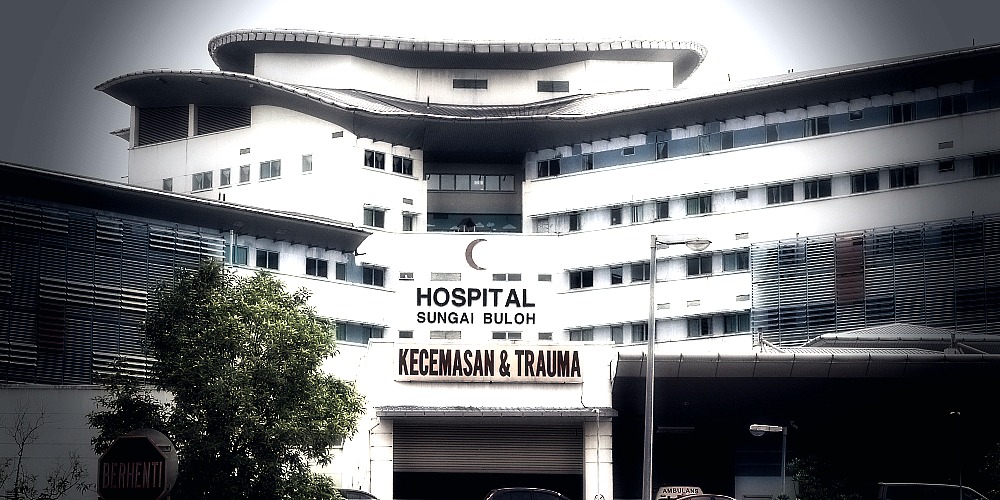
(Ravindran Raman Kutty is an active social worker.)
ADVERTISEMENT
ADVERTISEMENT






